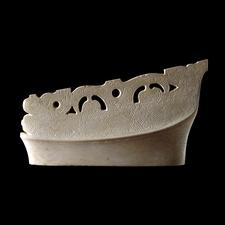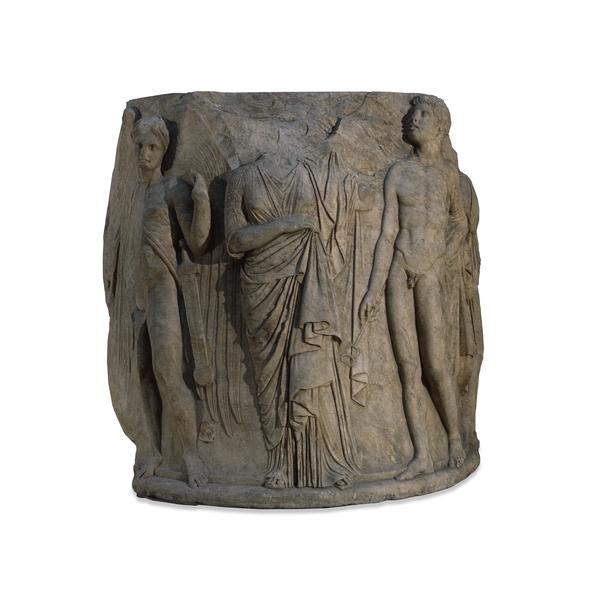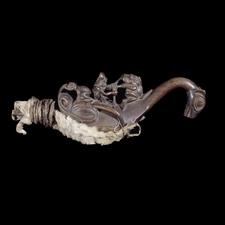Jade ornament for the top of an axe shaft

China, Neolithic period, Liangzhu culture, about 2500 BC.
The graves of the Liangzhu culture (about 3000-2000 BC) sometimes had as many as three hundred as three hundred jade artifacts. These included bead necklaces and other decorative pieces such as this ornament for an axe. Many are carved with motifs derived from monster and human-like faces. The carving is often of the highest quality, with fine modulated relief, openwork and very complicated incised designs. The massive jade cong and discs and such fine personal jades as this example must have belonged to a society of considerable complexity.
Marble column drum from the later Temple of Artemis at Ephesos

Hellenistic Greek, about 340-320 BC.
From Ephesos, modern Turkey. A fragment from one of the Seven Wonders of the World
This is the best preserved column drum from the Temple of Artemis. It has the remains of seven figures, two of which have been almost completely obliterated. The subject portrayed is disputed, but the scene is clearly presided over by the messenger god, Hermes, who gazes upwards with his kerykeion (winged staff) in his right hand and petasos (wide-brimmed sun hat) hanging behind his head. The god appears here in his guise as Hermes Psychopompos (leader of souls to the Underworld). The woman standing in front of him, whom he appears to guide, has been identified as many different tragic heroines, including Iphigenia, Alkestis or Eurydike. Other theories base the scene on the drum around the myth of Persephone. The suggestion that death is involved is supported by the presence of a winged youth with a sword who may be Thanatos, the personification of death.

